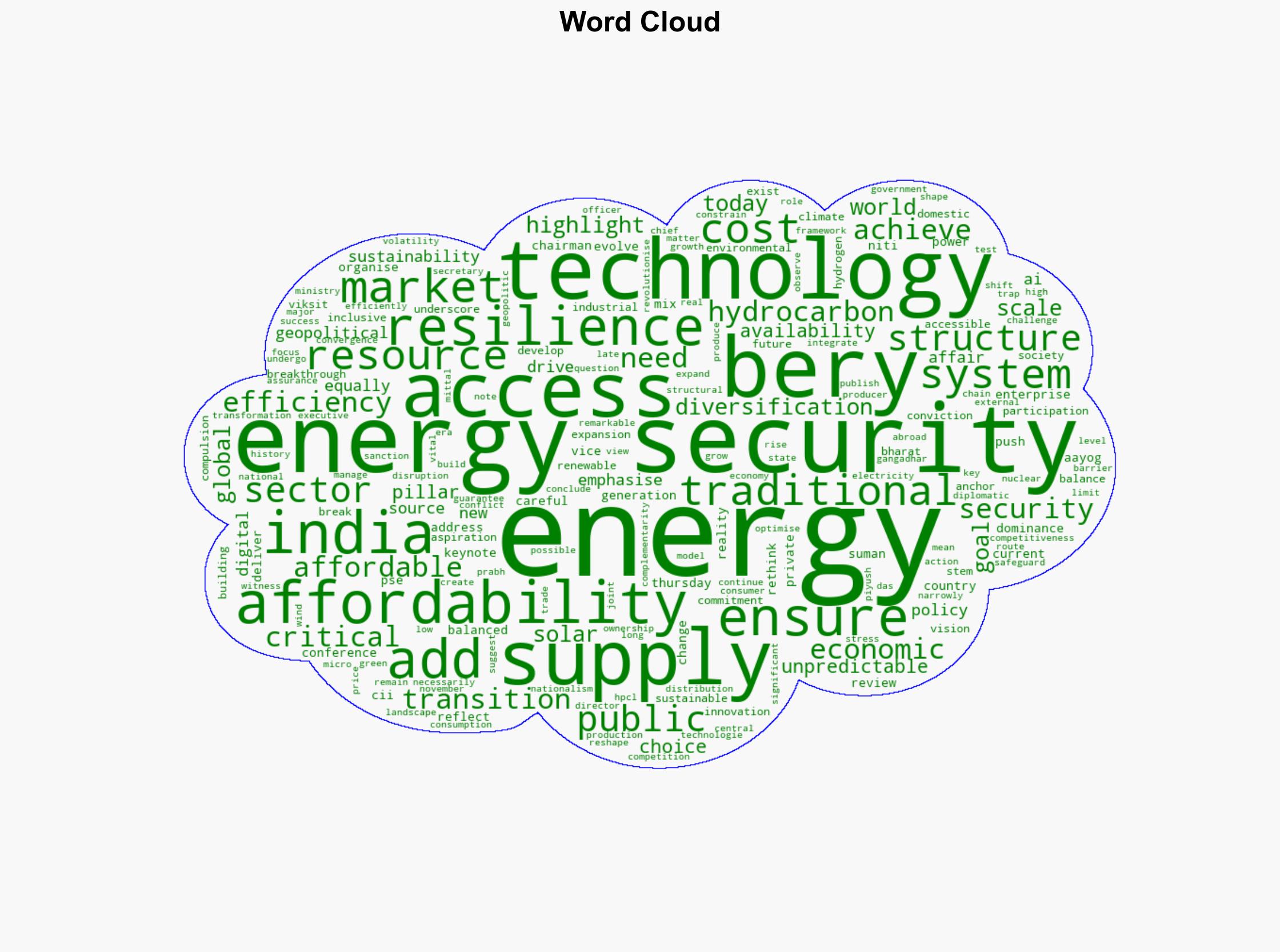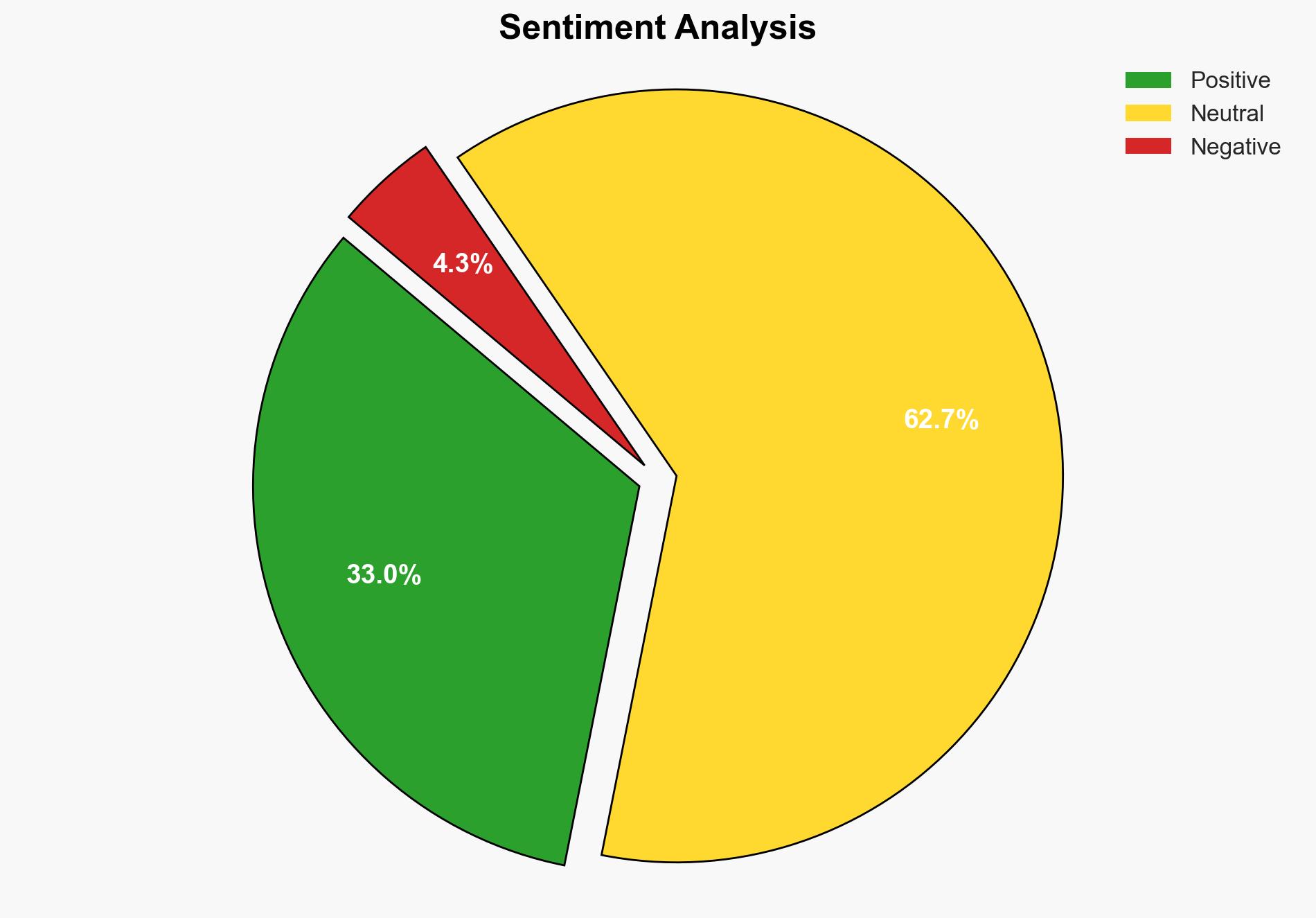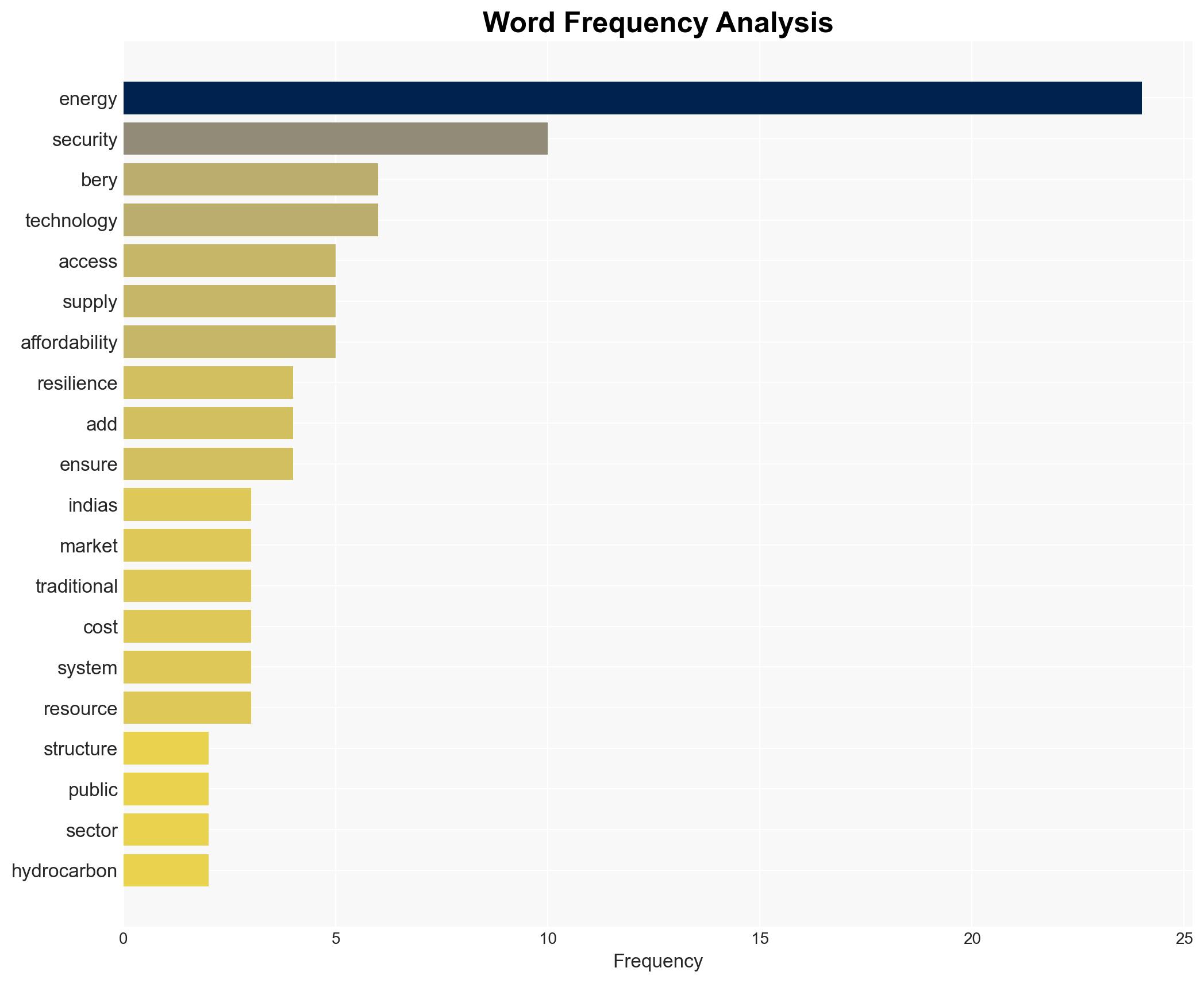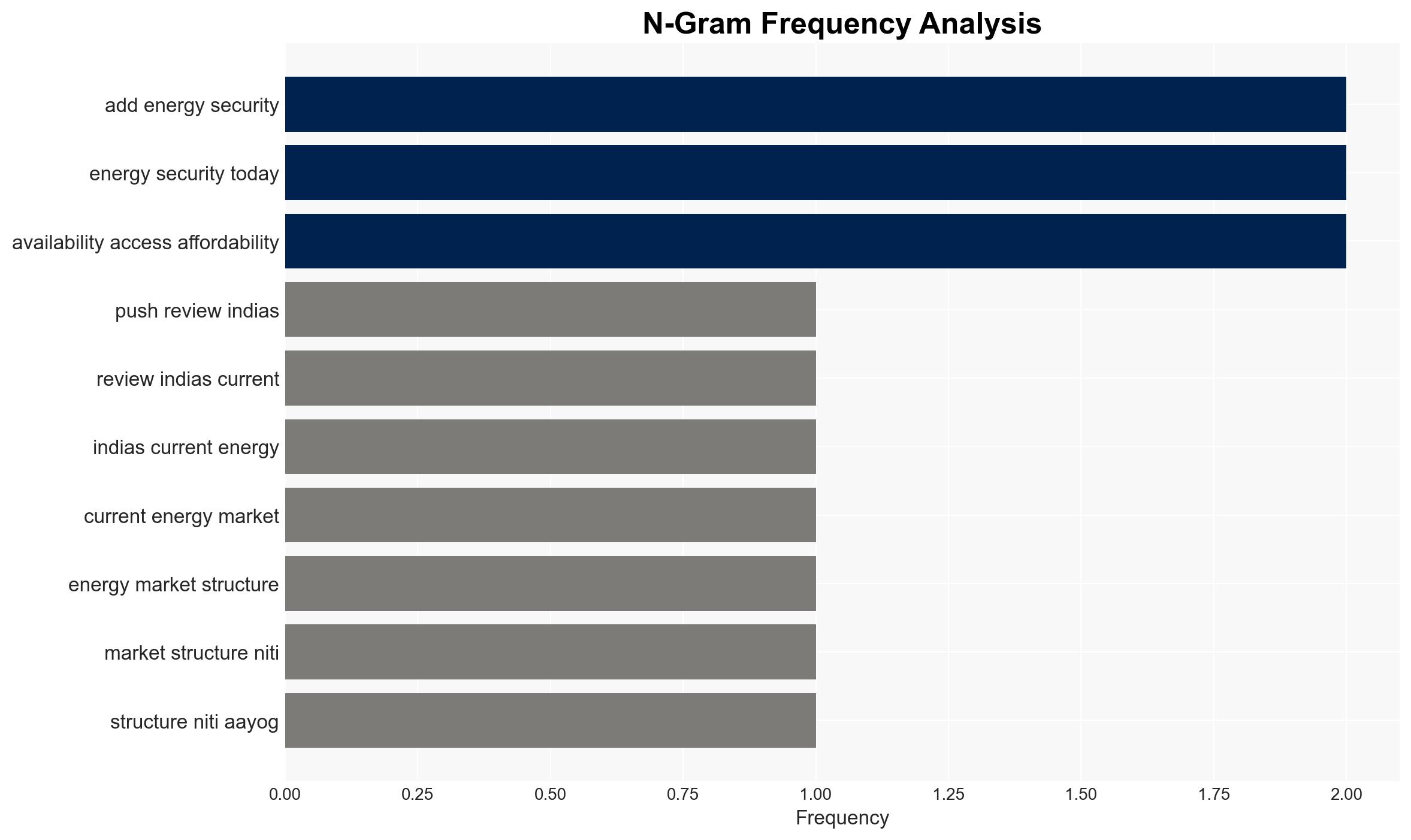Dominance of public-sector enterprises in hydrocarbons electricity generation must evolve Niti Aayog VC – BusinessLine
Published on: 2025-11-14
AI-powered OSINT brief from verified open sources. Automated NLP signal extraction with human verification. See our Methodology and Why WorldWideWatchers.
Intelligence Report: Dominance of public-sector enterprises in hydrocarbons electricity generation must evolve Niti Aayog VC – BusinessLine
1. BLUF (Bottom Line Up Front)
The strategic judgment is that the evolution of India’s energy market structure, particularly the dominance of public-sector enterprises (PSEs) in hydrocarbons electricity generation, is necessary to enhance energy security, efficiency, and sustainability. The most supported hypothesis is that a balanced mix of public and private participation will foster innovation and resilience. Confidence level: Moderate. Recommended action: Encourage policy frameworks that facilitate private sector involvement and technological advancements.
2. Competing Hypotheses
Hypothesis 1: The dominance of PSEs in hydrocarbons electricity generation is a barrier to innovation and efficiency, necessitating a shift towards increased private sector participation to achieve energy security and sustainability.
Hypothesis 2: The current dominance of PSEs is essential for maintaining national energy security and stability, and any shift towards private sector involvement should be approached cautiously to avoid destabilizing the existing energy framework.
Hypothesis 1 is more likely due to the global trend towards energy diversification and the need for technological innovation to meet climate goals and economic demands.
3. Key Assumptions and Red Flags
Assumptions: It is assumed that private sector involvement will inherently lead to increased innovation and efficiency. It is also assumed that the current PSE dominance limits these aspects.
Red Flags: Resistance from entrenched interests within PSEs and potential regulatory hurdles could impede the transition. Additionally, geopolitical tensions and resource nationalism could affect energy diversification efforts.
4. Implications and Strategic Risks
The transition towards a balanced energy market structure could face political resistance and economic challenges. There is a risk of increased energy costs during the transition period, which could impact industrial competitiveness. Cybersecurity threats may also rise as digital technologies become more integrated into the energy sector. Geopolitical disruptions could further complicate supply chain resilience.
5. Recommendations and Outlook
- Encourage public-private partnerships to leverage the strengths of both sectors.
- Implement regulatory reforms to facilitate private sector entry and competition.
- Invest in research and development for breakthrough technologies in renewable energy.
- Best-case scenario: Successful integration of private sector leads to a more resilient and innovative energy market.
- Worst-case scenario: Resistance and geopolitical tensions hinder progress, leading to energy insecurity.
- Most-likely scenario: Gradual transition with mixed success, requiring ongoing policy adjustments.
6. Key Individuals and Entities
Suman Bery, Vice Chairman of Niti Aayog; Prabh Das, Managing Director and CEO of HPCL Mittal Energy; Piyush Gangadhar, Joint Secretary, Economic Affairs, Ministry of External Affairs.
7. Thematic Tags
National Security Threats, Energy Transition, Public-Private Partnerships, Innovation, Geopolitical Risks
Structured Analytic Techniques Applied
- Cognitive Bias Stress Test: Expose and correct potential biases in assessments through red-teaming and structured challenge.
- Bayesian Scenario Modeling: Use probabilistic forecasting for conflict trajectories or escalation likelihood.
- Network Influence Mapping: Map relationships between state and non-state actors for impact estimation.
Explore more:
National Security Threats Briefs ·
Daily Summary ·
Methodology





